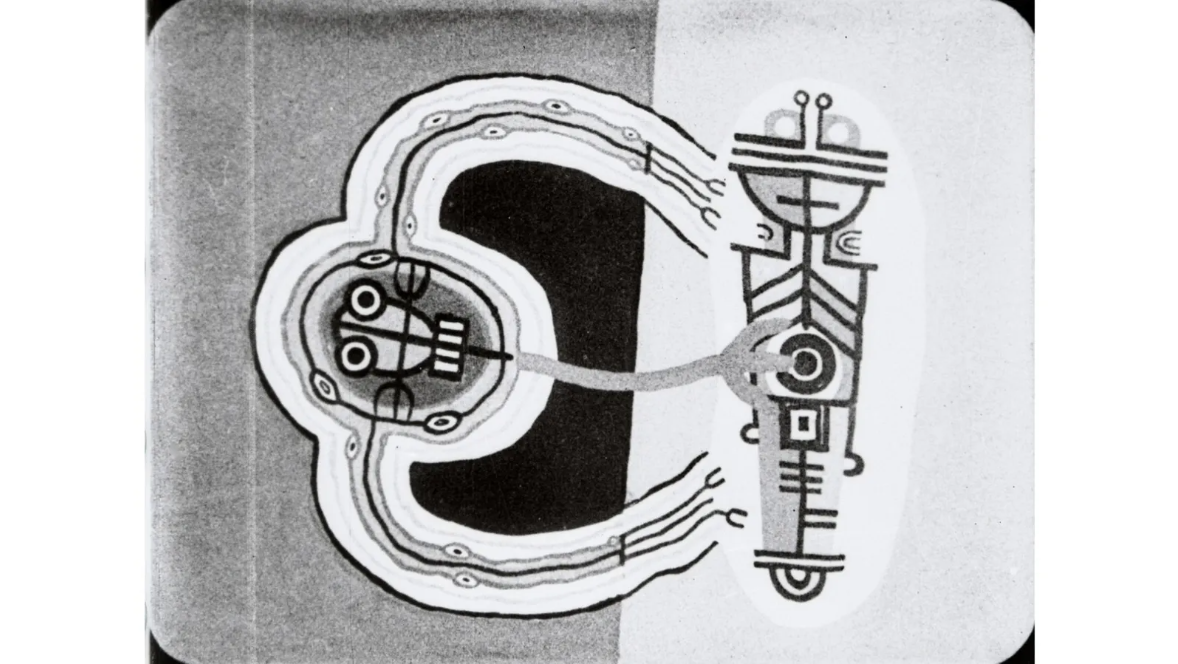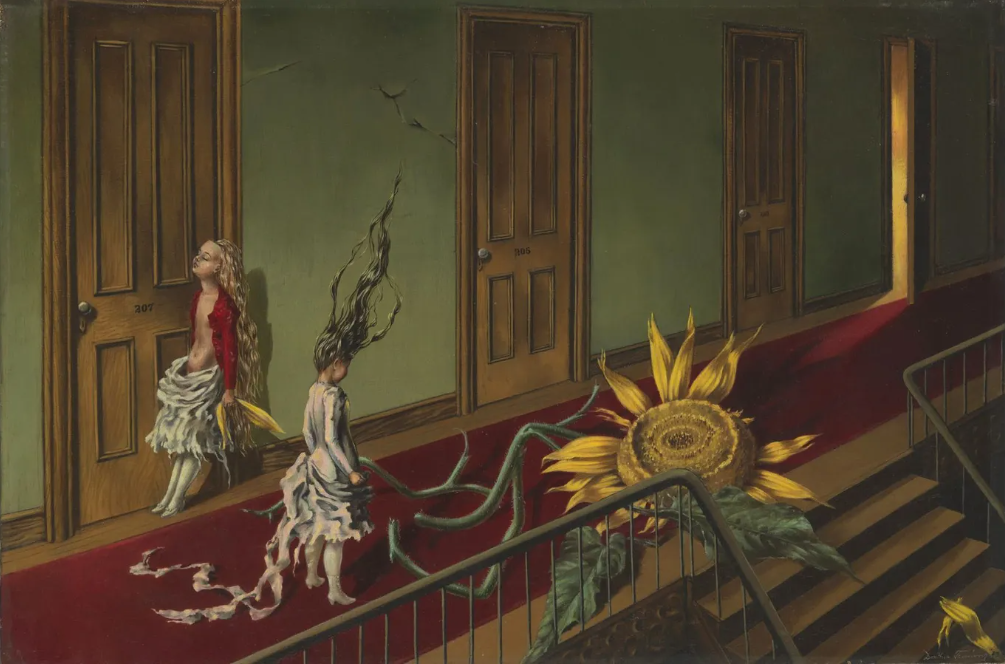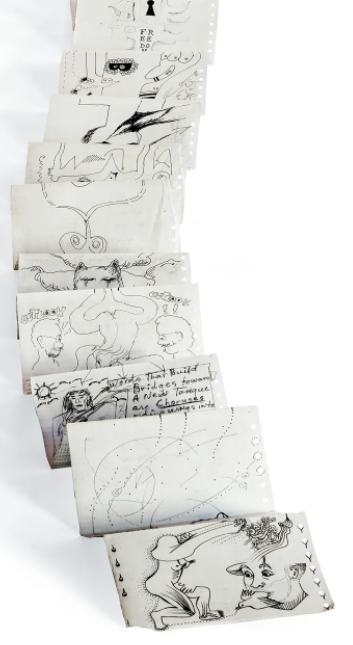
©The National Museum of Modern Art, Tokyo / MOMAT/DNPartcom via BBC
Vocabulary:
- rationality /rash-uh-NAL-i-tee/
- void /void/
- defiance /dih-FAHY-uhns/
- repressed /ri-PREST/
- epitomize /ih-PIT-uh-mahyz/
[noun] – the quality of being based on clear thought and reason, or of making decisions based on clear thought and reason
Scientists use logic and rationality in their studies.
[noun] – a large hole or empty space
Lucy looked into the void over the cliff.
[noun] – behavior in which you refuse to obey someone or something
He slammed the door shut in defiance upon exiting the conference room.
[adjective] – having feelings that you do not express
Repressed emotions may lead to more stress and anxiety.
[verb] – to be a perfect example of a quality or type of thing
This movie epitomizes the society we currently live in.
Article reading:
Tusalava (1929) by Len Lye, New Zealand

© Stills Collection, Ngā Taonga Sound and Vision / Courtesy of the Len Lye Foundation via BBC
In this 10-minute animation, primitive worm-like entities emerge from the void, give birth to a humanoid figure, and eventually conquer him. Lye was inspired by stories of the moth larvae told by the Arrernte people of Central Australia and iconography from Māori and Samoan art.
Sea (1929) by Koga Harue, Japan

© The National Museum of Modern Art, Tokyo / MOMAT/DNPartcom via BBC
“Sea” was deliberate defiance of what Koga and his companions disliked about European Surrealism. They kept a practice widespread with the Surrealists in Paris: combining seemingly unrelated symbols to create mystical effects.
Eine Kleine Nachtmusik (1943) by Dorothea Tanning, USA

© Tate / DACS, 2022 via BBC
Tanning witnessed a Surrealist show in New York in 1936 and visited Paris three years later. She then discovered a way to express her repressed ideals and fears through a life-size doll and a girl whose approach to an eerily open door is blocked by an immense sunflower with ripped petals.
Long Distance (1976-2005) by Ted Joans, USA

© Private collection / Ted Joans estate, courtesy of Laura Corsiglia via BBC
The US poet, musician, and artist Ted Joans epitomizes his art to express his life’s work. It’s a 10-minute game of consequences in which one player sketches a portion of a scene and covers it so that the next player can add to it and pass it on to the next player. Joans was the common link that connected poets, musicians, writers, political thinkers, and artists who participated, and he accomplished it in Paris, Mali, North and Central America, and London.
Discussion Questions:
- Have you ever attempted to draw, paint, sculpt, or create something related to art (e.g., poetry, animation, etc.)?
- What is the strangest artwork you have seen? Kindly describe it.
- If you were to create an artwork, what would it be about and why?
- Do you think politics would gain control of Surrealism in the future?
- Which among the four artworks featured in the article are you interested in the most and why?
Summarization
Describe:
- disrupt
- emerge
- companion
- eerily
- immense